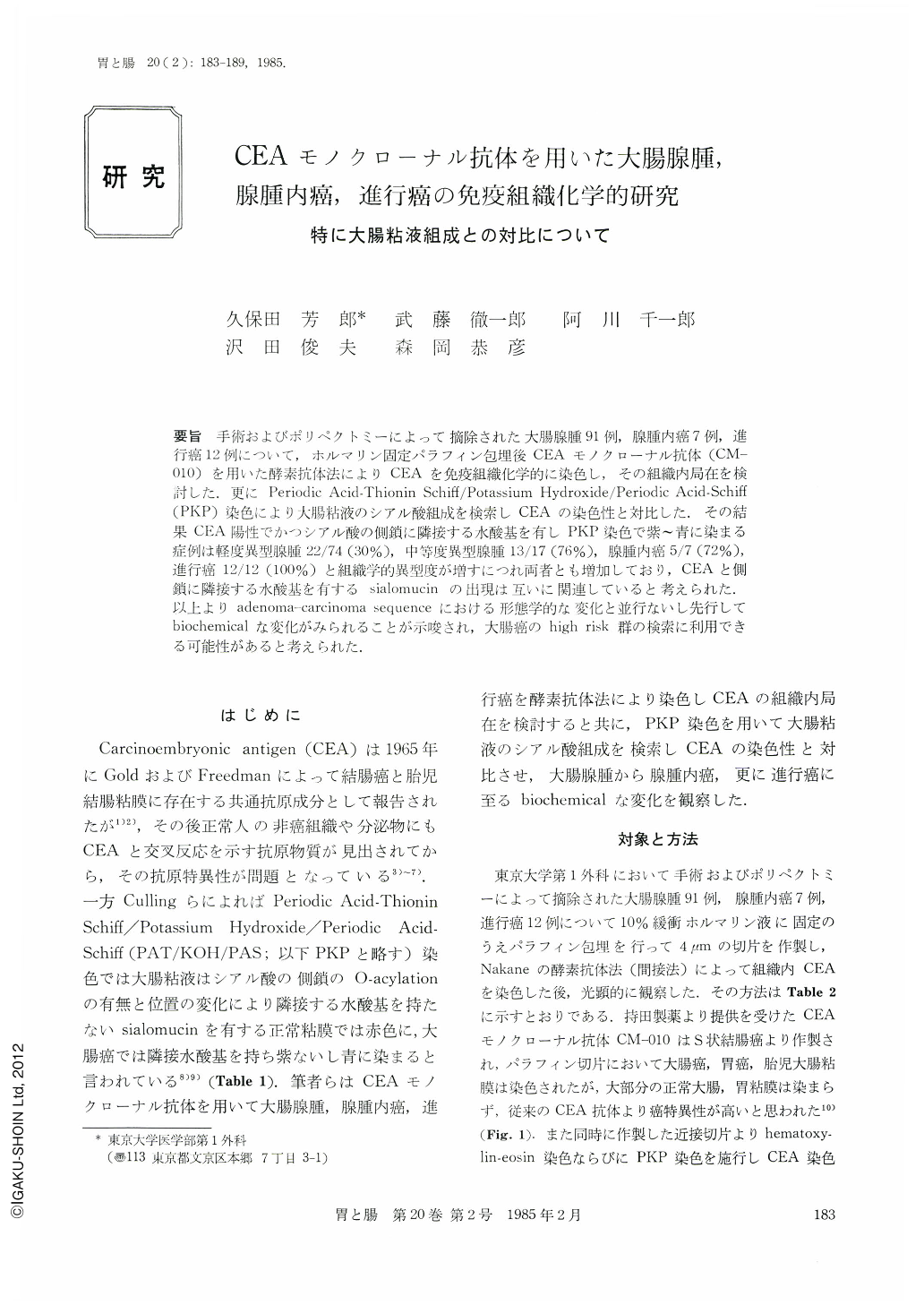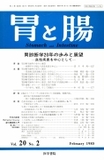Japanese
English
- 有料閲覧
- Abstract 文献概要
- 1ページ目 Look Inside
要旨 手術およびポリペクトミーによって摘除された大腸腺腫91例,腺腫内癌7例,進行癌12例について,ホルマリン固定パラフィン包埋後CEAモノクローナル抗体(CM-010)を用いた酵素抗体法によりCEAを免疫組織化学的に染色し,その組織内局在を検討した.更にPeriodic Acid-Thionin Schiff/Potassium Hydroxide/Periodic Acid-Shiff(PKP)染色により大腸粘液のシアル酸組成を検索しCEAの染色性と対比した.その結果CEA陽性でかつシアル酸の側鎖に隣接する水酸基を有しPKP染色で紫~青に染まる症例は軽度異型腺腫 22/74(30%),中等度異型腺腫 13/17(76%),腺腫内癌 5/7(72%),進行癌 12/12(100%)と組織学的異型度が増すにつれ両者とも増加しており,CEAと側鎖に隣接する水酸基を有するsialomucinの出現は互いに関連していると考えられた.以上よりadenoma-carcinoma sequenceにおける形態学的な変化と並行ないし先行してbiochemicalな変化がみられることが示唆され,大腸癌のhigh risk群の検索に利用できる可能性があると考えられた.
Cellular or tissue carcinoembryonic antigen (CFA) was investigated by immunohistochemical method using monoclonal antibody against CEA. Staining property of sialomucin was also detected by Culling's PAT/KOH/PAS (Periodic Acid-Thionin Schiff/Potassium Hydroxide/Periodic Acid-Schiff) method in which PAS-reactive vicinal diols on the side chain of sialic acid usually presented in carcinoma stained purple or blue.
Ninety one adenomas, 7 cancers in adenoma and 12 advanced cancers in formalin-fixed and paraffin-embedded specimens were studied which were obtained by surgical operation and polypectomy. Cellular CEA was stained at apical free surface, intracytoplasmic and intraglandular portions of the adenoma and cancer.
In order to demonstrate the biochemical characteristics in the adenoma-carcinoma sequence, the presence or absence of cellular CEA was compared with the histochemical property of sialomucin on the basis of morphological epithelial atypia. Twenty two of 74 adenomas with mild dysplasia (30%), 13 of 17 adenomas with moderate dysplasia (76%), 5 of 7 cancers in adenoma (72%) and 12 of 12 advanced cancers (100%) showed positive CEA as well as purple or blue stain for PKP method. These findings indicated that the presence of tissue CEA was well correlated with the presence of sialomucin having vicinal diols on the side chain of sialic acid, and this correlation seemed to become prominent with increasing grade of atypia.
In addition, it was considered that biochemical markers such as CEA or sialomucin of the large intestine could be used for detecting high risk group of colorectal cancers in pre-malignant state.

Copyright © 1985, Igaku-Shoin Ltd. All rights reserved.


